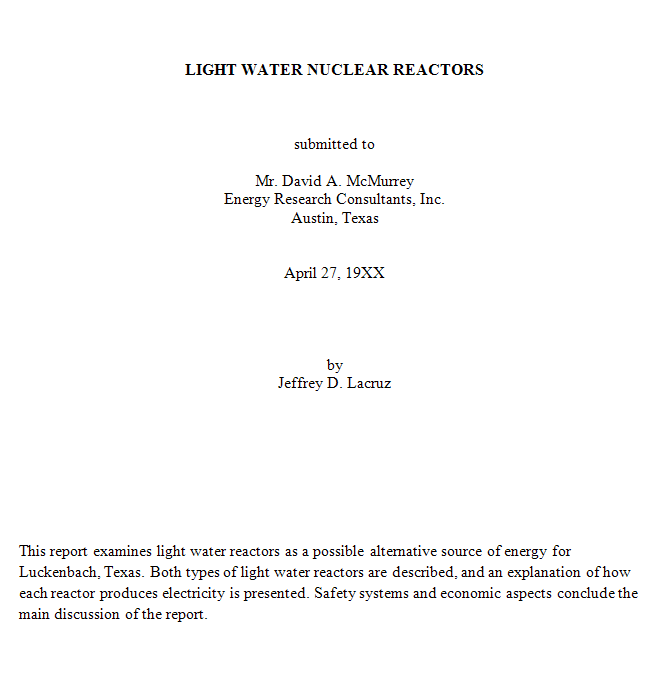45 10.3 Abstract and executive summary
Most technical reports contain at least one abstract—sometimes two, in which case the abstracts play different roles. Abstracts summarize the contents of a report, but the different types do so in different ways:
- Descriptive abstract. This type provides an overview of the purpose and contents of the report. In some report designs, the descriptive abstract is placed at the bottom of the title page, as shown in the following:
Descriptive abstract. Traditionally, it is placed on the title page (not the cover page).
- Executive summary. Another common type is the executive summary, which also summarizes the key facts and conclusions contained in the report. Think of this as if you used a yellow highlighter to mark the key sentences in the report and then siphoned them all out onto a separate page and edited them for readability. Typically, executive summaries are one-tenth to one-twentieth the length of reports ten to fifty pages long. For longer reports, ones over fifty pages, the executive summary should not go over two pages. The point of the executive summary is to provide a summary of the report—something that can be read quickly.
If the executive summary, introduction, and transmittal letter strike you as repetitive, remember that readers don’t necessarily start at the beginning of a report and read page by page to the end. They skip around: they may scan the table of contents; they usually skim the executive summary for key facts and conclusions. They may read carefully only a section or two from the body of the report, and then skip the rest. For these reasons, reports are designed with some duplication so that readers will be sure to see the important information no matter where they dip into the report.
Chapter Attribution Information
This chapter was derived by Annemarie Hamlin, Chris Rubio, and Michele DeSilva, Central Oregon Community College, from Online Technical Writing by David McMurrey – CC: BY 4.0


